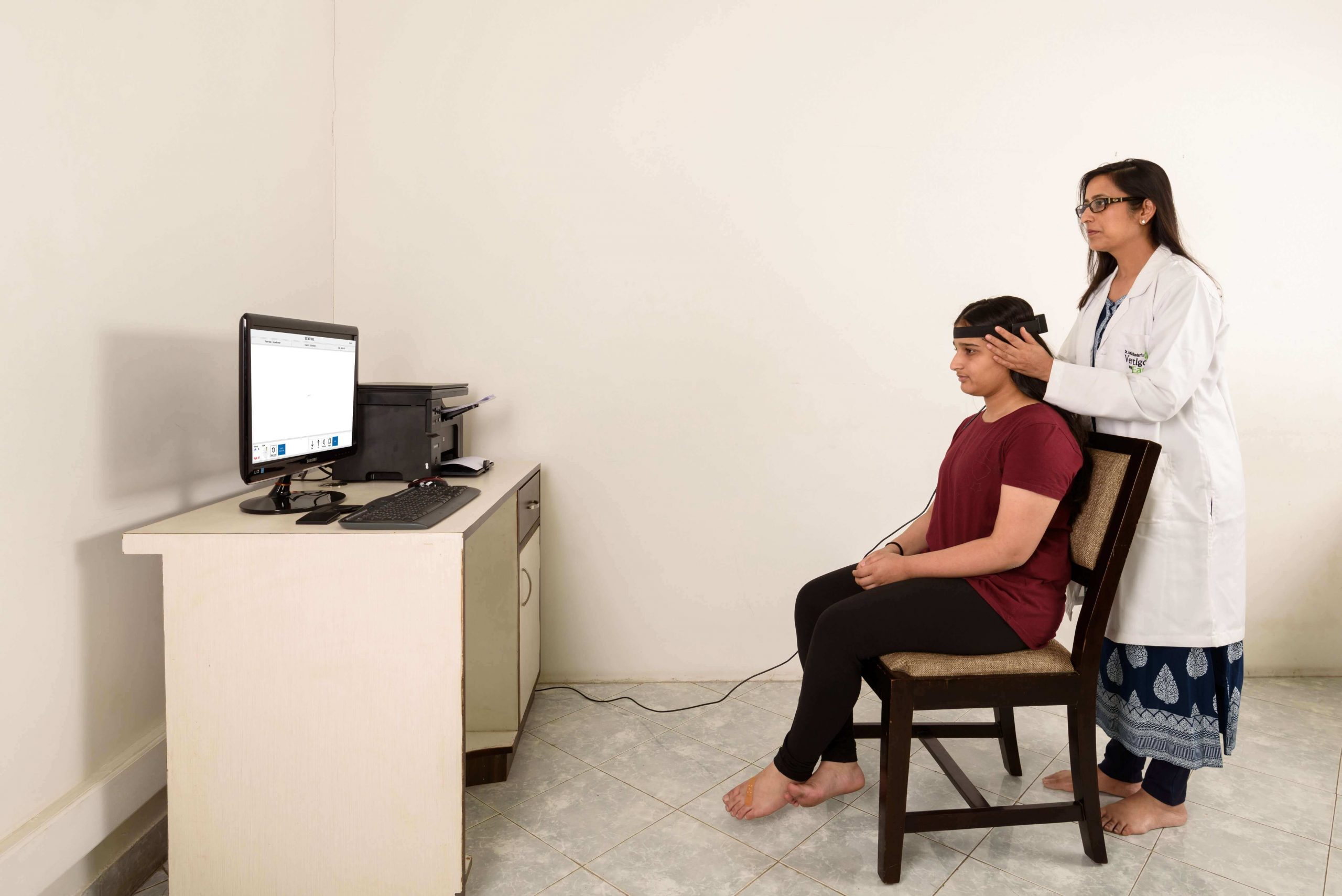Visual acuity is a measure of the ability of our eye to perceive details. Visual acuity can be measured in two ways static visual acuity and dynamic visual acuity.
Static visual acuity refers to our ability to see small details from a stationary point of view and it is often considered to be the standard definition when people refer to visual acuity. It is commonly used to diagnose problems that the patient might face with vision.
Dynamic visual acuity is our eye’s ability to perceive small details when either we are in motion or the object is in motion, or a combination of both.
It is possible to test the patient’s DVA in several ways from basic methods to using advance devices that measure DVA using the latest technology. In this blog, we’re going to take a look at what a DVA test is, why it is used, and how it works.
What is the DVA Test?
A dynamic visual acuity test can either be done with the use of instruments or without the use of instruments. Non-instrumented DVA tests are a low-tech and objective measure of the vestibular-ocular reflex (VOR) in the patient.
For non-instrumented DVA tests, the examiner passive rotational head movement stimuli in the patient and the test is conducted based on how the patient performs and reacts to the stimuli. Non-instrumented tests can be used in clinics that do not have the advanced equipment required to perform instrument-assisted DVA tests.
Instrumented DVA tests are an objective and instrumented method of test DVA of patients. The test asses the visual acuity of the patient during head movement relative to the baseline static visual acuity of the patient. Specialized devices are used to track eye movement in the patients and offer a more thorough test for dynamic visual acuity for most patients.
What is the DVA Test used for?
A DVA test can be used to detect various problems. Some of the popular uses of the test include the following:
- Detecting vestibular-toxicity in patients as early as possible.
- Detecting bilateral peripheral vestibulopathy.
- Adding the rehabilitation process in some patients.
- Used to asses the effectiveness of treatment and rehabilitation.
The process of DVA tests and how it works?
DVA tests are primarily used to measure the vestibular ocular reflex (VOR) in patients. The VOR is responsible for maintaining a stable vision while the patient’s head is in motion.
DVA tests involve measuring the eye movement relative to head movement along 3 axes via the neural pathways which are commonly known as the angular and translational VOR.
Depending on the clinic, the test can be computerized, instrumented or non-instrumented. The results of the tests can help in identifying and diagnosing vestibular problems in patients early and are often used in treatment relating to vertigo and dizziness.
What is the SVV Test?
A subjective visual vertical test (SVV test) is a test of the inner ear in which the patient’s perception of verticality is assessed. It is used to detect if the patient is suffering from the signs of an abnormal vertical tilt that can cause dizziness and vertigo.
However, as the name suggests, the test is subjective and it cannot be used to directly diagnose problems such as Meniere’s disease, vestibular migraine, acute vestibular syndrome (AVS). There are a number of ways to conduct the test and a subjective visual vertical diagnosis can help in the following:
- In the detection of vestibular disorders.
- To check the progression of rehabilitation in patients.
- Assessing chronic dizziness and other disorders.
- To differentiate between peripheral and central vestibular disorders.
The role of Vestibulo-Ocular Reflex (VOR)
The vestibular-ocular reflex is responsible for ensuring that we have dynamic visual acuity. The reflex moves our eyes in coordination with the movement of our head which ensures that we are able to look at objects clearly even when our head is moving.
When a patient has a poor vestibulo-ocular reflex, some common problems include experiencing visual blurring when looking at an object while the patient or the object is in motion.
VOR testing is usually a part of vertigo diagnosis and treatment and used to diagnose problems that patients experiencing vertigo might have.
Get the best vertigo treatment with NueroEquilibrium
We are committed to providing the latest technology when it comes to the diagnosis and treatment of vertigo and dizziness. Our DVA tests are highly advanced and computerized and are hassle-free when it comes to the patient and the doctor.
Keep reading our blog to know more about vertigo and how to deal with it!





